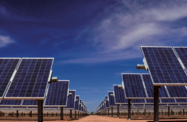Aiming to sustain its impressive economic growth of recent years, Ghana is increasingly focusing on improving its electricity infrastructure. Rising demand, together with inconsistent input supply, is putting pressure on the government and key players to bolster the country’s production and transmission capacity.
Electricity demand in Ghana has risen over 10% a year for the past three years, according to figures from the Ministry of Energy, in line with population growth and business development. Electricity consumption is currently estimated at 7.09bn kilowatts per hour (KWh), while production capacity hovers at around 6.49bn KWh, according to a recent statement by William Hutton-Mensah, the managing director of the Electricity Company of Ghana (ECG). This means that Ghana is constantly running on a tight demand-and-supply balance, which exposes the network to blackouts.
Gas supply from the West African Gas Pipeline, for example, which brings natural gas from Nigeria, has been erratic and generally below contracted levels over the past few months, reducing available supply. This has resulted in occasional load shedding in recent years, which in turn has constrained the expansion of manufacturing and heavy industry activity. To help minimise this, and stimulate new capital formation in labour-intensive fields, Ghana aims to raise its current generation capacity from the current 2000 MW to 5000 MW by 2015, local media has reported.
The Volta River Authority (VRA), the country’s biggest electricity producer, is well aware of the need for increased generation. According to Kweku Awotwi, the CEO of VRA, “Over the past couple of years, we have seen double-digit growth in terms of energy demand. Many of the investments coming into the country for the oil and gas sector will certainly fuel further demand.”
Awotwi recently confirmed that the up and coming Bui Dam, which will add an extra 400 MW to the country’s electricity production capabilities, will be completed by 2013, as scheduled. Initial supply from the $623m project is expected to come online by December 2012.
In line with the government’s moves to try and expand the role of the private sector in electricity generation, transmission and distribution, an increasing number of public-private partnerships are popping up. The Shenzhan Energy Group and the China Africa Development Fund, for example, jointly established the Sunon Asogli plant at Kpone. The $200m power plant currently produces 200 MW of electricity. The second phase of the project, which is now underway, is set to add an additional 360 MW of production capacity when completed. The upgrade will dramatically increase Sunon Asogli’s total electricity production, and will allow the power plant to sell directly to bulk customers, such as mining companies and heavy industry.
As it strives to develop a reliable electricity supply, Ghana is also determined to accelerate the expansion of its power grid within the country. The government has a stated goal of reaching universal electricity access by 2020. To this end, Ghana was recently awarded a $350m line of credit from US-based Exim Bank. The loan will finance the extension of electricity supply to reach 1400 communities in the Western, Central and Brong Ahafo regions of Ghana.
Work is also under way to complete the Kintampo substation, a $29m project that will draw power from the Bui Dam. The substation is one of 44 infrastructure-upgrade projects currently being undertaken by GRIDCO, the country’s transmission company. According to Charles Darku, the CEO of GRIDCO, “The current generation and transmission system is running very close to its top capacity. That is why we are investing so much into infrastructure.”
Ghana and South Korea have also recently signed an agreement that will see the Asian country provide a loan of $67.2m to finance GRIDCO’s development of the 330-KV Prestea and Kumasi substations and inter connecting transmission lines. Ghana’s electricity grid company is aiming to raise around $1bn to help finance infrastructure upgrades over the next four to five years.
Other projects will also add production capacity in the coming years. VRA is conducting feasibility studies for the construction of another dam in the north of the country. Furthermore, construction has begun on Ghana’s first solar power project, which will add 2 MW in electricity production, with another 8 MW expected to follow. VRA has also begun feasibility studies for the establishment of wind farms.
All of these are essential if the country is to continue its impressive rate of GDP expansion. These developments will also place Ghana squarely in the centre of the West African Power Pool, which when established will connect neighbouring countries within the same electricity grid using high-voltage lines – paving the way for a regional energy market.

